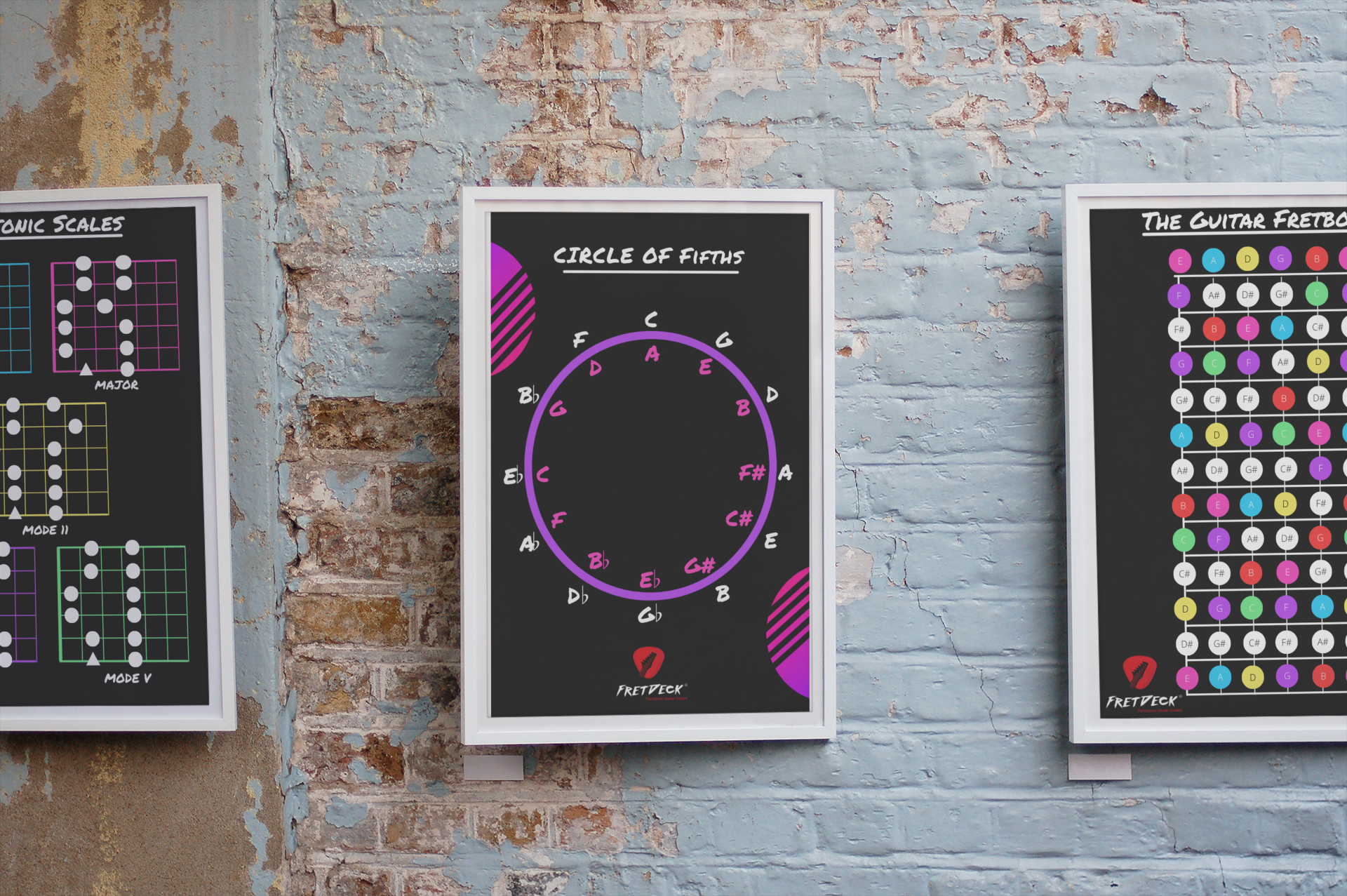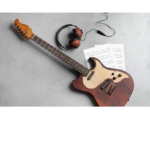Blues music, with its rich history and deep emotional expression, is a genre that resonates with both musicians and listeners. One of the fundamental elements of blues guitar is the use of scales, and among these, the pentatonic scale reigns supreme. In this blog post, we’ll explore how to use the C minor pentatonic scale to create soulful and expressive blues music. We’ll dive into the scale’s structure, essential techniques, and practical applications in blues improvisation and composition.
Understanding the Blues and Its History
Before we dive into the specifics of the C minor pentatonic scale, it’s essential to understand the roots and characteristics of blues music. The blues originated in the communities of the Deep South in the late 19th century. It evolved from spirituals, work songs, field hollers, shouts, and chants, as well as rhymed simple narrative ballads.
Blues music often expresses themes of sorrow, struggle, and resilience, but it can also convey joy, triumph, and a sense of community. The genre is known for its distinctive 12-bar structure, call-and-response patterns, and the use of “blue notes” – notes that are slightly flattened to create a sense of yearning or tension.

Download FREE Guitar Charts!
We have 27 FREE guitar charts to help you learn the guitar fretboard. Learn How to play chords and scales with these free resources.
Free Guitar Resources
Understanding the C Minor Pentatonic Scale
The pentatonic scale, characterized by its five-note structure, is one of the most versatile and commonly used scales in blues music. The C minor pentatonic consists of the following notes:
- C (root)
- Eb (minor third)
- F (perfect fourth)
- G (perfect fifth)
- Bb (minor seventh)
In comparison to the natural minor scale, which includes seven notes, the pentatonic scale omits the second and sixth degrees, creating a simpler and more focused sound. This simplicity makes it a go-to choice for blues guitarists, providing a solid foundation for improvisation and soloing.
Positions of the C Minor Pentatonic Scale on the Fretboard
To effectively use the C minor pentatonic scale in blues, it’s essential to know its positions across the guitar fretboard. Here are the five positions of with the pentatonic system.
Position 1 (Root on the 8th Fret):
e|------------------------8-11-|
B|--------------------8-11-----|
G|---------------8-10----------|
D|-----------8-10--------------|
A|-------8-10------------------|
E|-8-11------------------------|
Position 2 (Root on the 10th Fret):
e|------------------------11-13-|
B|--------------------11-13-----|
G|---------------10-12----------|
D|-----------10-13--------------|
A|-------10-13------------------|
E|-11-13------------------------|
Position 3 (Root on the 13th Fret):
e|------------------------13-15-|
B|--------------------13-16-----|
G|---------------12-15----------|
D|-----------13-15--------------|
A|-------13-15------------------|
E|-13-15------------------------|
Position 4 (Root on the 15th Fret):
e|------------------------15-18-|
B|--------------------16-18-----|
G|---------------15-17----------|
D|-----------15-17--------------|
A|-------15-18------------------|
E|-15-18------------------------|
Position 5 (Root on the 3rd Fret):
e|------------------------3-6---|
B|--------------------4-6-------|
G|---------------3-5------------|
D|-----------3-5----------------|
A|-------3-6--------------------|
E|-3-6--------------------------|
Techniques for Playing Blues with the C Minor Pentatonic Scale
To bring out the true essence of blues, it’s not just about playing the right notes but also about using the right techniques. Here are some essential techniques to master when using the pentatonic scale in blues:
1. Bending:
Bending is a quintessential blues technique. By bending a note, you can add expression and emotion to your playing. Focus on bending the minor third (Eb) up to the major third (E) or the minor seventh (Bb) up to the root (C).
Example:
e|------------------------8b10-|
B|--------------------8b11-----|
G|---------------8b10----------|
D|-----------------------------|
A|-----------------------------|
E|-----------------------------|
2. Vibrato:
Adding vibrato to your notes can make them sing and sustain, giving them a vocal quality that is perfect for blues. Practice applying vibrato to the root (C), minor third (Eb), and minor seventh (Bb).
Example:
e|-----------------------8~---|
B|--------------------8~------|
G|----------------10~---------|
D|----------------------------|
A|----------------------------|
E|----------------------------|
3. Sliding:
Sliding between notes adds fluidity and smooth transitions to your playing. Use slides to move between positions or connect notes within the same position.
Example:
e|----------------------8/11---|
B|-----------------8/11--------|
G|--------------8/10-----------|
D|-----------------------------|
A|-----------------------------|
E|-----------------------------|
4. Hammer-ons and Pull-offs:
These techniques add speed and articulation to your playing. Use hammer-ons and pull-offs to embellish your lines and create dynamic phrasing.
Example:
e|----------------------8h11p8-|
B|-----------------8h11--------|
G|--------------8h10-----------|
D|-----------------------------|
A|-----------------------------|
E|-----------------------------|
Practical Applications of the C Minor Pentatonic Scale in Blues
Now that we’ve covered the basic structure and techniques, let’s explore how to apply minor pentatonic scale in various blues contexts.
1. Blues Soloing:
This type of scale scale is perfect for crafting expressive blues solos. Start by playing simple phrases, and then gradually incorporate bends, slides, and vibrato to add depth and emotion.
Example Solo:
e|--------------------------------------------------8-11-|
B|------------------------------------------8-11b13------|
G|------------------------8-10b12--8~--------------------|
D|-------------8-10--------------------------------------|
A|------8-10--------------------------------------------|
E|-8-11--------------------------------------------------|
2. Blues Riffs:
Create catchy blues riffs using the minor pentatonic scale. Riffs are the backbone of many blues songs, providing a memorable hook that drives the music.
Example Riff:
e|------------------------------------------------|
B|------------------------------------------------|
G|-----------------------------------8-10---------|
D|-----------8-10------8-10----------8-10---------|
A|-------8-10------8-10------8-10----6-8----------|
E|-8-11-------------------------------------------|
3. Call and Response:
The call-and-response technique is a hallmark of blues music. Use minor pentatonic scales to create a “call” phrase, then respond with a complementary phrase. This interaction can be between the guitar and vocals or between two guitar parts.
Example Call and Response:
Call:
e|------------------------------------------------|
B|-------------------------------------------8-11-|
G|-----------------------8-10b12--8~-------------|
D|-------------8-10------------------------------|
A|-------8-10------------------------------------|
E|-8-11------------------------------------------|
Response:
e|-------------------------------------------------|
B|-------------------------------------------8-11b13|
G|----------------------8-10b12--8~-----------------|
D|-----------8-10-----------------------------------|
A|-------8-10---------------------------------------|
E|-8-11---------------------------------------------|
4. Blues Turnarounds:
Turnarounds are short, concluding phrases that signal the end of a blues progression and lead back to the beginning. Use the minor pentatonic scale to craft effective turnarounds.
Example Turnaround:
e|------------------------------------------------|
B|------------------------------------------------|
G|--------8-10-8----------------------------------|
D|----8-10-------10-8-----------------------------|
A|-10------------------10-9-8---------------------|
E|---------------------------11-8-----------------|
5. Combining the Minor Pentatonic with the Blues Scale:
Enhance minor pentatonic scales by incorporating the blues scale, which adds a flattened fifth (Gb) to the mix. This note, often called the “blue note,” adds a distinctive bluesy flavor.
C Blues Scale:
- C, Eb, F, Gb, G, Bb
Example:
e|------------------------------------------------8-11-|
B|-------------------------------------------8-11b13---|
G|-----------------------8-10b12--8~-------8-11--------|
D|-------------8-10------------------------8-----------|
A|-------8-10----------------------8-9-10--------------|
E|-8-11-----------------------------------------------|
Famous Blues Songs Using the C Minor Pentatonic Scale
To inspire your practice, here are a few classic blues songs that utilize the C minor pentatonic scale:
- “The Thrill is Gone” by B.B. King:
- B.B. King’s emotive soloing in this song heavily relies on the C minor pentatonic scale, showcasing the scale’s expressive potential.
- “Red House” by Jimi Hendrix:
- Hendrix’s use of the C minor pentatonic scale in “Red House” highlights his innovative approach to blues guitar, blending traditional techniques with his unique style.
- “I’m Tore Down” by Freddie King:
- Freddie King’s powerful playing in “I’m Tore Down” exemplifies how the C minor pentatonic scale can drive a blues song with energy and emotion.
Practice Tips for Mastering the C Minor Pentatonic Scale
To effectively incorporate the minor pentatonic scales into your blues playing, consider the following practice tips:
1. Slow and Steady:
- Practice the scale slowly and accurately, ensuring you hit each note cleanly. Gradually increase your speed as you become more comfortable.
2. Use a Metronome:
- Practicing with a metronome helps develop your sense of timing and rhythm, crucial elements in blues music.
3. Record Yourself:
- Recording your practice sessions allows you to listen back and identify areas for improvement. It also helps track your progress over time.
4. Learn from the Masters:
- Study the playing of blues legends like B.B. King, Jimi Hendrix, and Freddie King. Analyzing their solos and riffs can provide valuable insights and inspiration.
5. Jam with Others:
- Playing with other musicians helps develop your improvisational skills and teaches you how to respond to different musical contexts.
6. Experiment with Phrasing:
- Focus on how you phrase your notes. Try to mimic the way a singer would phrase lyrics, using pauses, dynamics, and varying note lengths.
7. Incorporate Other Scales:
- While the C minor pentatonic scale is a solid foundation, don’t be afraid to explore other scales, such as the blues scale or the natural minor scale, to add variety to your playing.
Conclusion
The C minor pentatonic scale is a powerful tool for creating soulful and expressive blues music. By mastering its positions on the fretboard, incorporating essential techniques like bending and vibrato, and applying it in various musical contexts, you can unlock the true potential of the blues. Remember to practice regularly, learn from the masters, and most importantly, play with feeling and emotion. The blues is not just a genre; it’s a way of expressing the human experience, and the C minor pentatonic scale is your key to that expression.

Download FREE Guitar Charts!
We have 27 FREE guitar charts to help you learn the guitar fretboard. Learn How to play chords and scales with these free resources.
Free Guitar Resources










